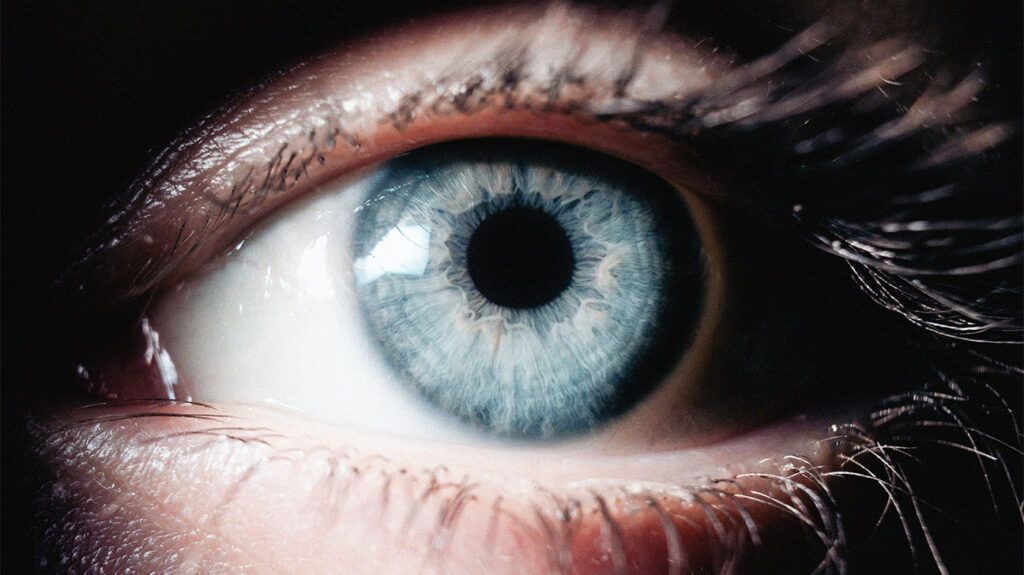Blepharospasm describes a condition where a person experiences an involuntary spasm of the muscles surrounding the eyelid. “Blepharo” refers to the eyelids, while “spasm” describes twitching of the muscles.
Eyelid spasms refer to when an eyelid twitches or suddenly closes. These movements are involuntary, meaning they are out of a person’s control. This differs from blinking or winking, which a person typically controls and does willingly.
A blepharospasm may last a few seconds or as long as a few hours. The spasm may range from blinking to scrunching up the whole face. In more advanced stages, it may cause a person to close their eyelids so tightly they cannot see.

Also known as
BEB is a type of dystonia. This describes a group of neurological conditions that cause jerky movements or muscle spasms.
Vs. hemifacial spasms
A hemifacial spasm is a similar condition that causes spasms around the eye. It occurs when facial muscles constrict, or tighten up. However, it only affects one side of the face and usually involves other muscles, such as the cheek or mouth.
Vs. myokymia
Myokymia describes eyelid twitching that may occur due to sleep deprivation or stress. These involuntary twitches only occur during periods of stress or inadequate sleep and typically resolve with rest or a reduction in stress.
Currently, the exact cause of BEB is unknown. However, researchers believe it is likely multifactorial, involving the interaction of certain genes and environmental factors.
Health experts also note that BEB likely develops when the part of the brain that controls the eyelid muscles
However, some evidence links BEB to motor network disorders, such as Parkinson’s disease. These conditions can also cause involuntary or uncontrollable body actions. Other research also notes that neurotransmitter imbalances, such as inhibiting the function of dopamine, may also play a role in the development of BEB.
Additionally, some possible risk factors for BEB may include:
- a family history of BEB
- a history of eye problems, such as eye trauma
- the use of certain drugs to treat Parkinson’s disease
- being a female between the ages of 40 and 60 years
Other health conditions may also increase the risk of BEB. These may include:
- dry eye
- anxiety
- sleep disorders
- brain lesions
- facial palsy
- myasthenia
- Meige syndrome
- Tourette syndrome
The
The
- blinking more often than usual
- difficulty keeping eyelids open, which can affect vision
- eye irritation
- light sensitivity
At present, there is no specific test to make a definitive diagnosis of BEB. Typically, a doctor will be able to make a diagnosis following a
The main treatment for BEB is typically Botulinum toxin (botox) injections. This is a muscle-relaxing substance that blocks the signals sent from the nerves to the muscles.
A doctor will administer the injections into the muscles above and below the eye. The injections usually take a day or two to work and may last up to 3 months. As the effect is temporary, a person will typically require repeat injections to control the excessive muscle contractions.
If injections are not suitable, a doctor may recommend medications or surgery instead.
Some people may experience relief from BEB using the following drugs:
- clonazepam
- trihexyphenidyl
- lorazepam
- baclofen
- tetrabenazine
However, as side effects are common with these medications, doctors do not frequently recommend them.
Two types of surgery are often suitable to help treat BEB. One type involves removing the facial muscle responsible for the spasms. The other removes a portion of the nerve to make the spasms less severe.
Blepharospasm, also known as benign essential blepharospasm, refers to involuntary twitching of the eyelids. Researchers are unsure of the exact cause, but it likely occurs due to a combination of genetic and environmental factors affecting the part of the brain that controls movement.
A doctor will typically diagnose blepharospasm following a routine eye exam. Treatment options include botox injections, certain drugs, and surgery.


